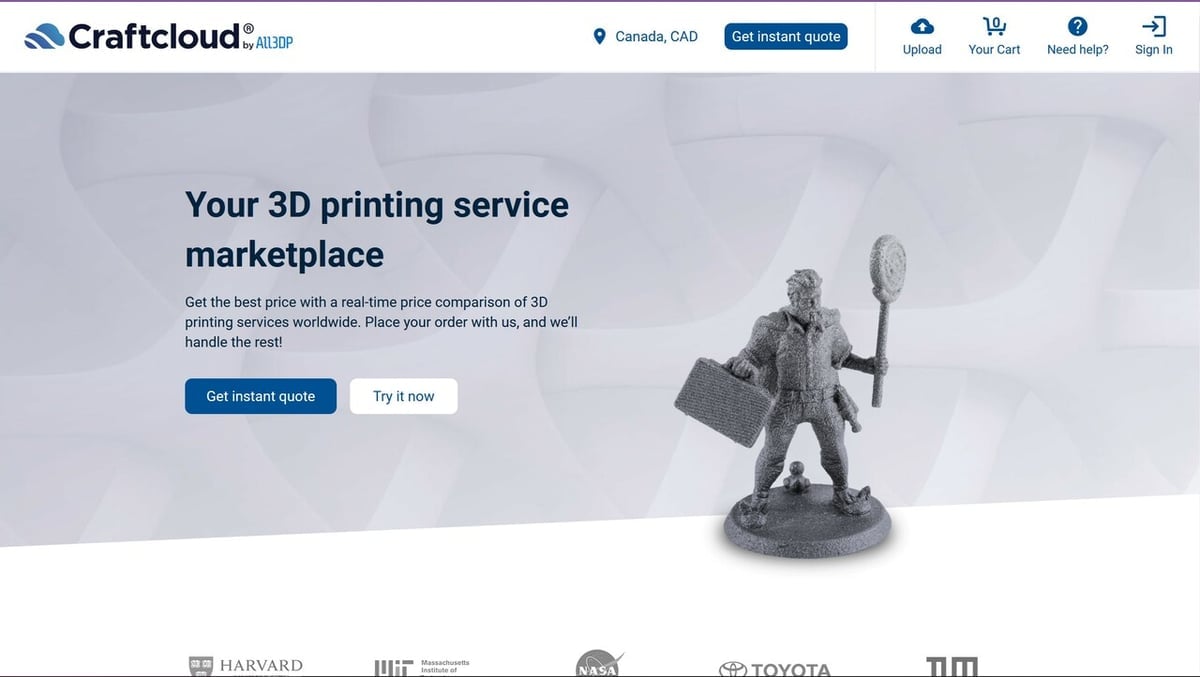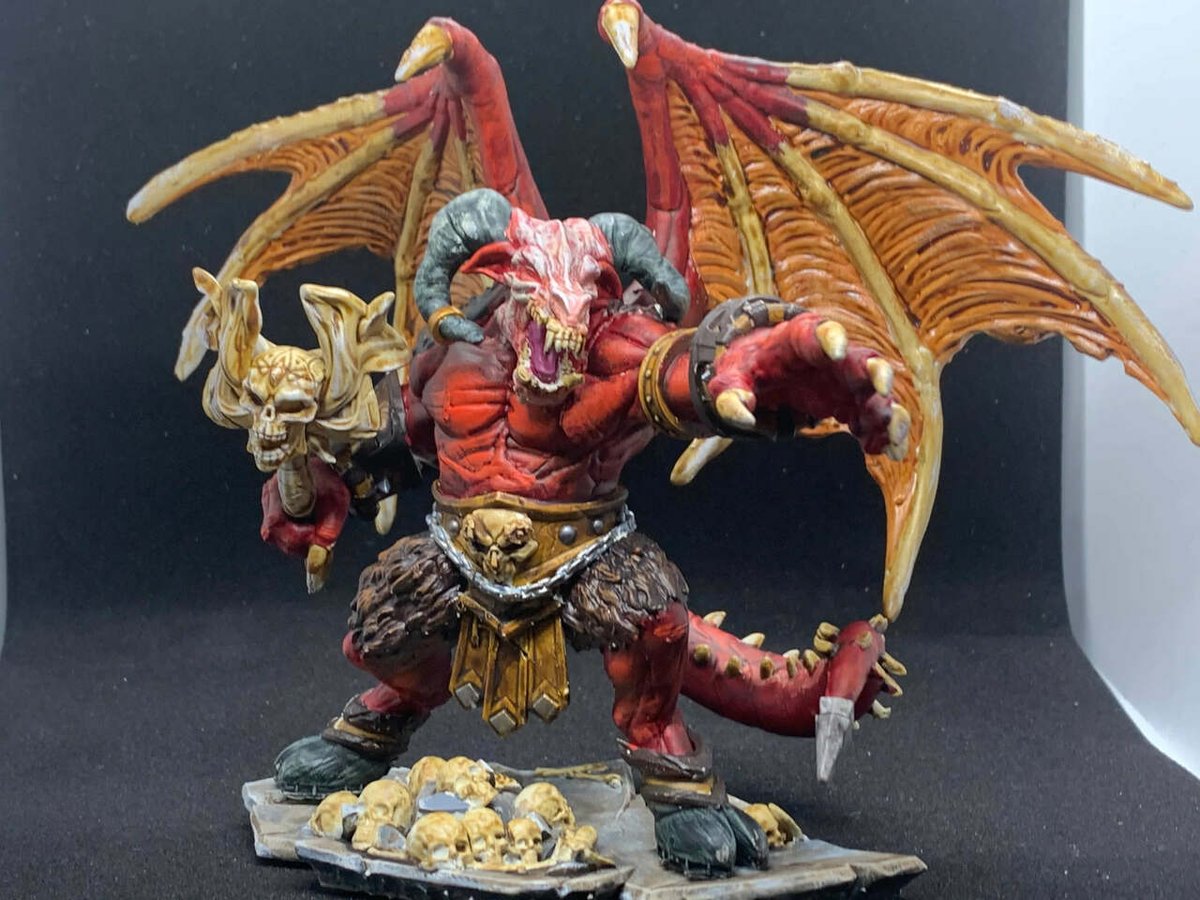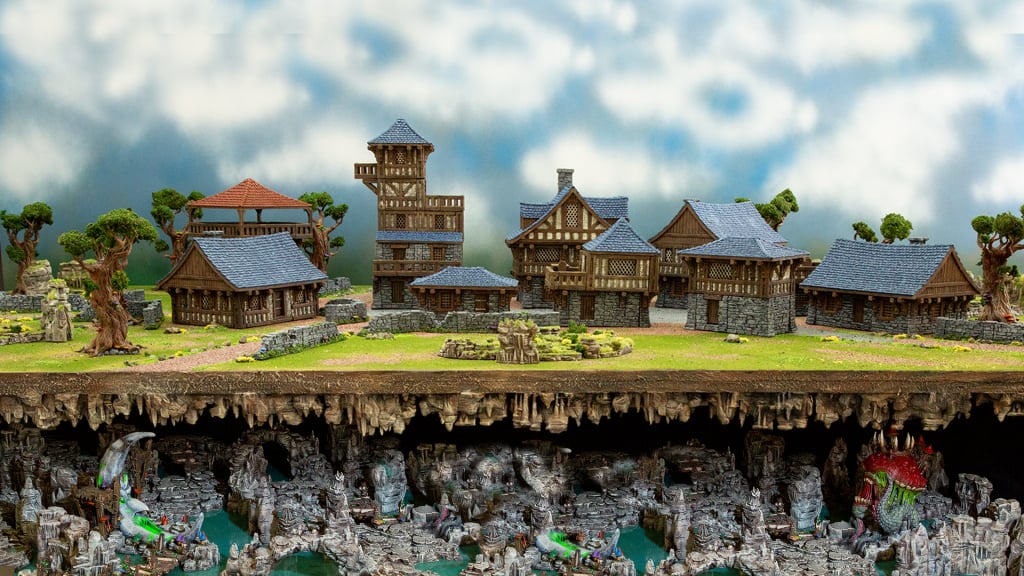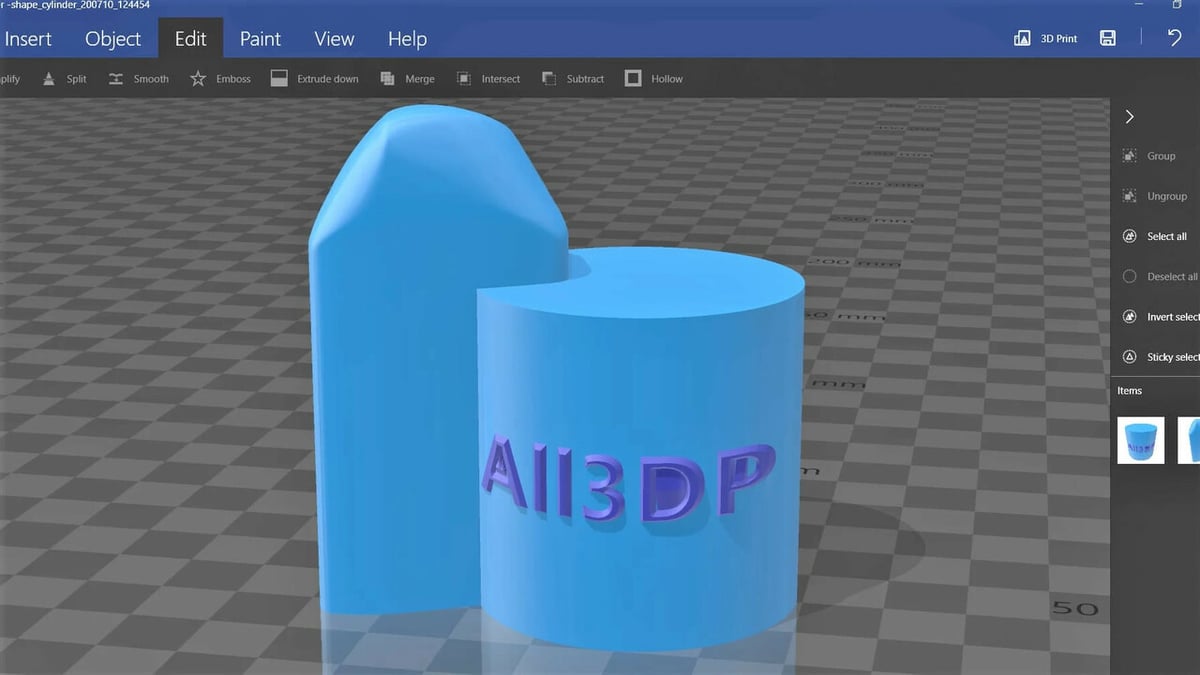It’s 2022, and tabletop games are more popular than ever, none more than Dungeons and Dragons. From its birth in the 70s, massive popularity in the 80s, and gradual decline to dormancy in the 90s & 00s, it came charging out of the gate in 2014 with its 5th edition to become more popular than ever.
While the game can be played within the “theater of the mind” (without props), many players prefer to use miniature figurines (usually at a scale of 28 mm) to represent their characters, monsters, and villains, as well as terrains like cave walls, dungeon floors, lava flows, and other hazards characters may face. This creates an immersive visual scene and makes tactics and strategies easier to visualize.
The combinations of creatures and terrains that players may face are endless – from ice giants in the frozen North to zombie dinosaurs in steaming tropical jungles, to a cabal of evil wizards in an underground tomb – each situation is unique and often doesn’t use the same pieces.
That’s where 3D printing comes in!
Why Make Your Own Pieces

Here are a few reasons why you might want to 3D print your own game pieces:
- Cost: Purchasing STLs and materials is often less expensive than buying pre-made products. This bundle of 89 STLs costs $30, while this 31-piece set of Dwarven Forge tiles costs $149. Even if you throw in a $50 bottle of resin, you’re still coming out at nearly half price!
- Variety: With sites like MyMiniFactory, MiniHoarder, and even Thingiverse, you have a huge selection of pieces to choose from. You’re also able to mix-and-match sets as desired. If you want just a single horse, you can download it in seconds. You would have to purchase a pack of figurines, just to get the one you want.
- Guarantee of product: Official figures are sold in “blind bags”, so you never know what you’re going to get, such as this “brick” of figures from the Dungeon of the Mad Mage expansion set. That kind of loot box mechanic simply isn’t viable when purchasing files – you always know what you’re supposed to get, and you can complain to the site owner if you don’t get it.
- Personalization: Generic figurines and terrain are useful because they can be re-used for other games and settings. A forest scene can be the site of a battle for one group, and it can be an encounter with a nature spirit for another group. But what if you want something with a certain aesthetic, like Cyberpunk Dwarves or Skyship Pirates? STLs have you covered. If you can’t find something that fits your needs, you can probably get it commissioned – or learn how to sculpt it yourself.
- Model customization: Speaking of personalized models, there are ways to create unique, custom figurines without needing to start a Udemy course on 3D modeling. If you’re adept with 3D modeling software, you can create and tweak your own models. Otherwise, sites like Hero Forge and Eldritch Foundry allow you to build your own figurine from a selection of arms, heads, and accessories, just like Mr. Potato Head. More information about these sites is in the “Character Builders” section below.
One-Stop Service

No 3D printer? No problem! With Craftcloud, they do the printing for you. Craftcloud is an on-demand 3D printing service owned by All3DP that does the work of dealing with new technologies and giving you the finished product. Simply take the file that you own, upload it to the server, and pick the material, color, and production location.
There’s no minimum order. So, whether you’re looking to get one mini or a mountain of terrain, you’ll be able to find a service that fits your needs. Within hours, your terrain or mini will be printed and then shipped to you.
Of course, it’s easy to get confused when trying to decide what exactly you need, so here are some suggestions for materials:
- PLA for most terrain pieces, and other objects like cases
- Standard resin for player character minis
- Impact resin for bigger minis, like bosses, which have bits that can break off easily
- Durable resin for moving parts, like the hinges for DM screens
- You can even print a d20 in gold for that extra impact!
Types of Models

So now that you know why you might want to use a 3D printer, what exactly can you print? While there’s not an official dictionary of terms, here’s some standard terminology in the tabletop game world to get you started:
- Miniatures (“minis”): These represent the characters and creatures on the table, from Dwarf bartenders to rampaging Dragons. Each player will have one mini that represents their character, and the Game Master will have minis for the important creatures, such as the monster the players are fighting, or the townsfolk who are running in terror and about to become lunch if the players don’t step in.
- Environment (“terrain”): The landscape the miniatures will be standing on or surrounded by, like a deep forest, a mountain pass, or a rowdy tavern. This is useful for a couple of reasons: First, it automatically upgrades the player’s investment in the scene (particularly if it’s painted), and second, it provides a visual of the obstacles the players might face. A locked door, slippery ice patch, or deadly steam vent are easier to keep track of when you can actually see them.
- Props (“scatter”): Objects that can be moved around easily to dress the scene, like tool racks, tables, barrels, tents, among others. These serve the same two functions as terrain and aren’t necessary to the game, but a bit of scatter here and there will sell the scene to your players. It’s also satisfying to be able to interact physically with the tables, chairs, and other detritus getting thrown around in the bar fight.
- Other: With the wider adoption of 3D printing, tabletop games are a natural place to experiment with new printing ideas and techniques. Many supplemental objects to play the game with are being created all the time, including:
- Dice towers for dropping dice down to randomize the results – plus they look cool!
- GM screens for hiding rolls and secrets from your players
- Status rings for showing which creatures or characters are poisoned, incapacitated, stunned, etc.
- Organizers for carrying your stuff
- and more!
File Sources

There are plenty of resources to get you started. Over the last couple of years, multiple sites have popped up to service the tabletop 3D printing scene, including:
- Thingiverse: Owned and operated by Makerbot, a 3D printing manufacturer, Thingiverse is one of the largest and oldest repositories of STLs on the internet. Unlike the other sites on this list, everything on Thingiverse is free to download and print for personal use, making it a great starting point for your collection. Other sites have a more nuanced selection, but you can’t beat free!
- MyMiniFactory: While Thingiverse takes a more general approach to its collection, MyMiniFactory focuses almost exclusively on tabletop game pieces. But don’t let the name fool you; in addition to minis, it has the largest selection of environments, props, and everything else you’re looking for to take your game to the next level. About 70% of the content on the site is for sale, with samples and demos making up the majority of the free content. Still, the prices are usually reasonable, and there are always bundles and other deals to be had.
- Patreon: Many 3D modelers make their living through their Patrons, subscribers who pay a fee to access an artist’s new content each month. If a particular artist or group’s style catches your eye, Patreon is a great way to ensure you get as much of their product as you want and at a steep discount when compared to retail prices on, for example, MyMiniFactory. If you stick with them, you can amass a large collection in a very short time.
- Kickstarter: On the other hand, Kickstarter only takes one payment, but you have to wait months, sometimes years to acquire what you paid for (even then, you might still end up empty-handed). Still, if you can afford the wait, there are incredible deals to be had, often at 50% or less than their eventual retail prices. That means you can go all-in on massive bundles and still get a good deal!
Tools

Purchasing and downloading stuff for your game is all well and good, but what if you want to change, edit, or even create your own scatter or terrain? There’s a host of helpful tools that you can get for free to help you start making your own 3D models. A few popular tools include the following:
- Meshmixer is used to edit 3D files before you send them to the slicer so that the changes are saved in the STL (the file itself) and not the g-code (what the slicer puts out, which the printer reads). This helps you save time if you have to re-slice the file in the future because the hollowing, supports, and other miscellanies are already taken care of.
- Microsoft 3D Builder can edit files like Meshmixer, but its most useful feature may be its ability to detect and automatically fix manifold errors in your files. These errors occur when the file has overlapping surfaces, such as when two objects intersect. This overlap can’t exist in the real world, and the object won’t be able to print. When the program detects such an error, it alerts you with a clear “Click here to repair” prompt. Depending on your computer’s specs, it can take a minute or so for the file to be fixed, after which you can load it into the slicer before printing.
- Tinkercad allows you to build simple shapes and edit them into more complex forms. This can create surprisingly detailed models, and it can teach you many of the fundamentals of other 3D design programs, so you can expand your skillset later on.
- Blender is a hugely popular free 3D modeling and animation program that works great for a wide variety of applications. For our purposes, its large toolset is better for editing organic models like minis. In particular, you can adjust the mesh to shave, flatten, or even move parts of the mini to adjust its positioning. For example, you can adjust a barbarian to hold their axe over their head, rather than the side. It’s a pretty steep learning curve, but once you get used to it, the sky’s the limit!
Character Builders

While the above tools are great for modifying or making your own terrain and scatter, minis are a different beast entirely. You’ll need to hone your skills and knowledge of anatomy before you can use them to make a mini that resembles your character. Or you could use an online character builder.
Character builders are browser-based applications (embedded in websites) that allow you to customize your own miniature and either download or have the printed model shipped to you. Either way, you’ll be able to create a fully-customized game piece that represents your unique character for less than the cost of purchasing a generic official mini.
There are multiple character builders online, including the following:
- Hero Forge: Probably the best-known on this list, the site boasts a smorgasbord of different options for your mini, including poses, bases, and even colors – provided you go with their premium service, of course.
- Eldritch Foundry: While Hero Forge has more accessories like wings and potion bottles, Eldritch Foundry gives you more control over finer details like facial expressions, nose shape and length, as well as other features. Using a sliding scale like in Skyrim character creation, you can make your Orc fighter look truly unique.
- Desktop Hero: While you can assemble a figure like the other sites on this list, Desktop Hero has something they call “Asset Packs“. A one-time purchase of a themed kit (such as Sorcery, Druid, Modern, Sci-Fi) that allows you to download and print as many minis as you like using the assets from the kit. A nifty idea if you’d like to print armies of player characters!
Miniature Comparison

Now that you’ve got your scatter, tinkered with your terrain, and forged your hero, one question remains: How exactly do you print this stuff?
Currently, there are two broad categories of consumer-level 3D printing:
- Liquid resin printing: Resin printers dip a build plate into a vat of resin. The bottom of the vat is a clear plastic film, underneath which a UV light shines into the vat, hardening the liquid into a solid (a chemical process called “curing”) in the desired shape. These printers are great for small, detailed models like your minis, dice, and scatter. Recent innovations, like using LCD UV screens rather than older techniques, have made resin printers faster, more affordable, and able to be built to larger specs, such as the Elegoo Saturn. One drawback is the cost of the resin, which drives up the cost of larger projects, like terrain.
- Fused Deposition Modeling (FDM): These printers are actually more recent than resin printers (which have been around since the 1980s). They run a spool of plastic filament through a heated metal nozzle which melts the plastic, similar to how a hot glue gun works. The nozzle is then moved around the build plate in three dimensions, creating the object as each layer of hot plastic cools. Because of the physics involved in moving the nozzle and build plate around, these printers are typically slower than most resin printers, even before the addition of LCD screens. However, their lower cost and ease of construction means they can be built much larger than most resin printers, allowing you to print large objects, such as terrain, easily. Normally, FDM printers have problems with minis and similarly detailed models, but with the right settings, you can get resin-quality prints out of your FDM printer.
License: The text of "D&D: How to 3D Print Dungeons & Dragons Pieces" by All3DP is licensed under a Creative Commons Attribution 4.0 International License.

